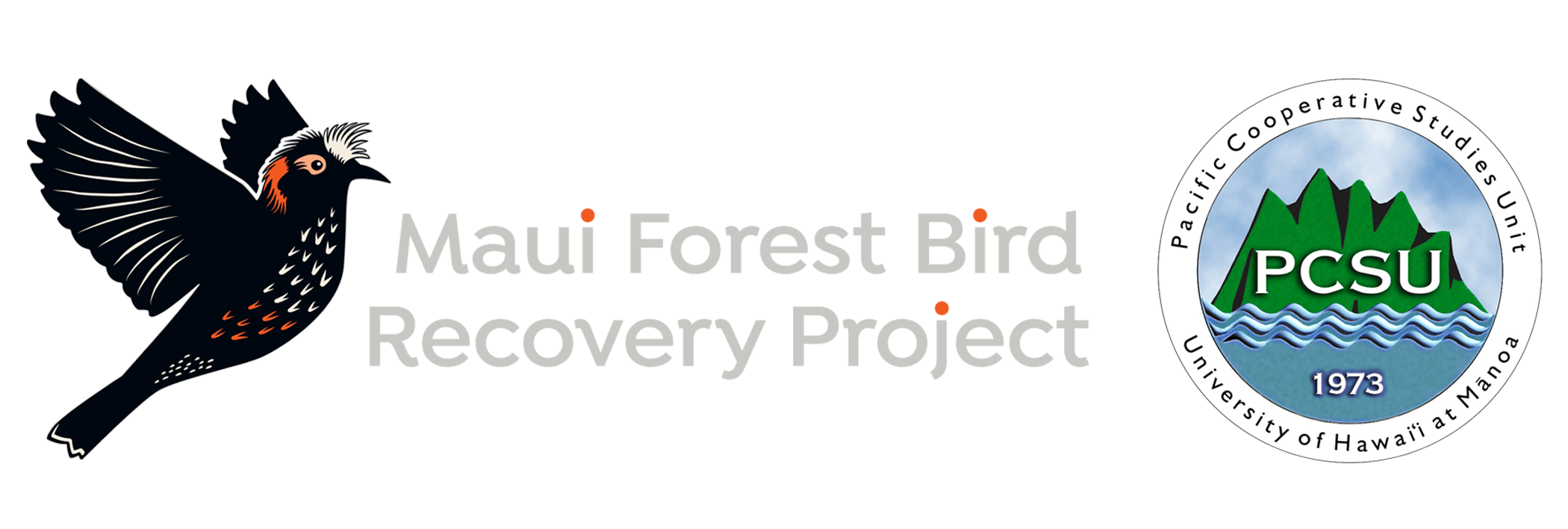Forest Restoration
REBUILDING FORESTS AND RECOVERING MAUI'S ECOSYSTEMSWhy Restore the Leeward Forest?
The critically endangered Kiwikiu and other native forest birds are now largely restricted to high-elevation native forests located on the windward slope of Haleakalā. This is due to:
- Invasive plant species
- Introduced mosquitoes and avian diseases
- Habitat loss and degradation
Fossil evidence suggests Kiwikiu once inhabited forests across Maui, and may have preferred the koa-dominated forests of the leeward or southern slopes. However, the leeward forests have been severely degraded by decades of overgrazing and the spread of non-native grasses, leaving only sparse tree cover in a savanna-like landscape.
Restoring these forests is critical — not just for future Kiwikiu reintroduction, but for watershed health, ecosystem function, and the survival of other endangered species.
Building Habitat at Nakula NAR
To support this vision, the Nakula Natural Area Reserve (NAR) was established in 2011 by the State of Hawai‘i’s Department of Land & Natural Resources- Division of Forestry and Wildlife (DLNR- DOFAW) through the Natural Area Reserve System (NARS).
- 2012: A 170-hectare section was fenced and all ungulates removed. This is the area where MFBRP focuses their research and recovery efforts.
- 2013: MFBRP and partners began experimental restoration trials to test the most effective techniques for forest recovery. Monitoring of these trials occurred throughout the first two years, then at five years, and again at 10 years.
- 2014- present: Continued outplanting and monitoring.
- 2015- present: Annual point count surveys are conducted to monitor the avian community within Nakula. Additional threat control and research was conducted during this time, including predator control and mosquito/disease monitoring and control.
What We Learned
- Natural Regeneration: native plants, ʻaʻaliʻi and koa, naturally regenerated best, especially where non-native grasses were removed.
- Out-planting Success: Most native species had >80% survivorship at 2 years, but reduced survival after 10 years likely due to competition with both grasses and other native species. Herbicide treatments led to larger seedlings but long-term benefits were strongest with the herbicide and topsoil exposure treatment.
- Canopy vs. Open Planting: Open areas yielded better growth and survival than planting under koa canopy.
- Long-Term Effects: After ten years, many plots matured into dense forest patches. Continued germination was seen in herbicide and topsoil exposure treatment plots, including new native species. Shrubs had lower survivorship than canopy species.
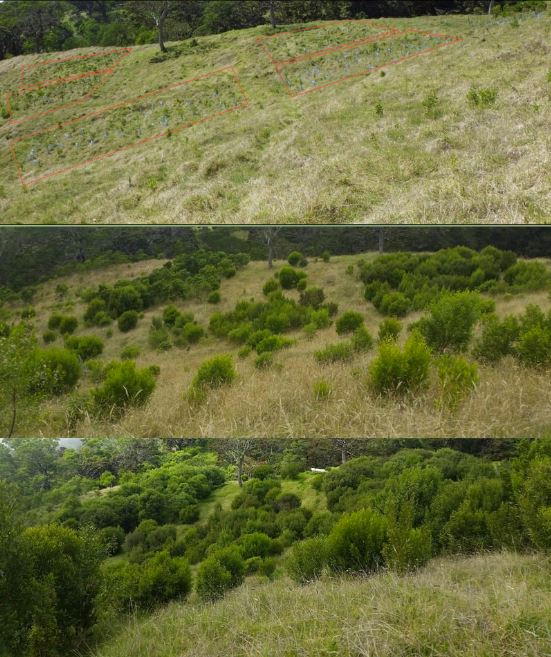
Planting plots over the last decade.
Based on these findings, our restoration work focuses on:
- Creating planting corridors across open areas to connect remnant forest patches that occur within gulches
- Stabilizing erosion scars with strategic planting and the use of coirs
- Outplanting understory species to rebuild forest structure and diversify the ecosystem
Restoration in Action
Our work in Nakula NAR includes:
- Seed collection
- Outplanting and monitoring
- Weed and grass control
- Annual bird surveys
Including work conducted by partners within Nakula, over 300,000 native seedlings have been planted since 2013 supporting forest recovery and native bird return. In 2019 and 2022, ʻIʻiwi (Drepanis coccinea) were documented in Nakula, the first records of the species in the region in modern history. Additionally, satellite imagery shows an increase in forest cover over the area.
This long-term restoration wouldn’t be possible without the contributions of our partners, supporters, and volunteers.
Collaboration Across the Landscape
Restoring enough habitat for future bird reintroductions will require more than Nakula alone. Thus, our work is part of a broader, collaborative restoration effort.
These partners and many others are restoring surrounding areas that are critical for providing continuous, diverse habitat for Kiwikiu and other species.
- State of Hawai‘i- DOFAW & Native Ecosystem Protection & Management (NEPM) teams
- Leeward Haleakalā Watershed Restoration Partnership (LHWRP)
- Department of Hawaiian Homelands (DHHL)
- Haleakalā National Park
- Haleakalā Ranch
- American Bird Conservancy
The Path Forward
During our first attempted translocation of Kiwikiu to Nakula NAR, most birds died due to unexpectedly high mosquito densities and avian malaria, underscoring the growing threat of climate change and disease. Birds were observed foraging and using native plants in Nakula, suggesting the habitat could have supported them if not for mosquito-borne disease.
This makes mosquito control a top priority going forward. Once these efforts are successful at a landscape scale, restored leeward forests like Nakula will be vital for:
- Reintroducing Kiwikiu and other species
- Creating climate-resilient refugia
- Maintaining biodiversity and watershed health
Learn More:
Many presentations about this can be found in Publications, including:
- Ten-years of Experimental Restoration Trials on Leeward East Maui. 2025 poster presentation at the Hawai’i Conservation Conference.
- Planning for Kiwikiu reintroduction: Habitat restoration in Nakula Natural Area Reserve, Maui. 2015 Presentation at the Hawai’i Conservation Conference in Hilo, Hawai’i. The presentation can be viewed here.
- Experimental restoration trials in Nakula Natural Area Reserve in preparation for reintroduction of Kiwikiu (Pseudonestor xanthophrys). Report on the two year findings of monitoring the experimental plots in Nakula.
- 2019 Kiwikiu Conservation Translocation Report. Report on the Kiwikiu translocation in Nakula.
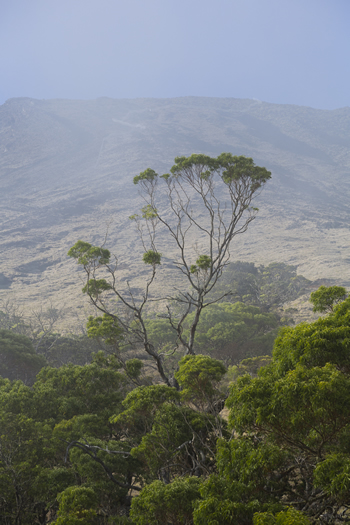

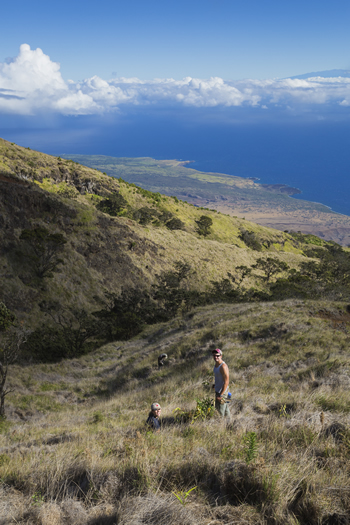

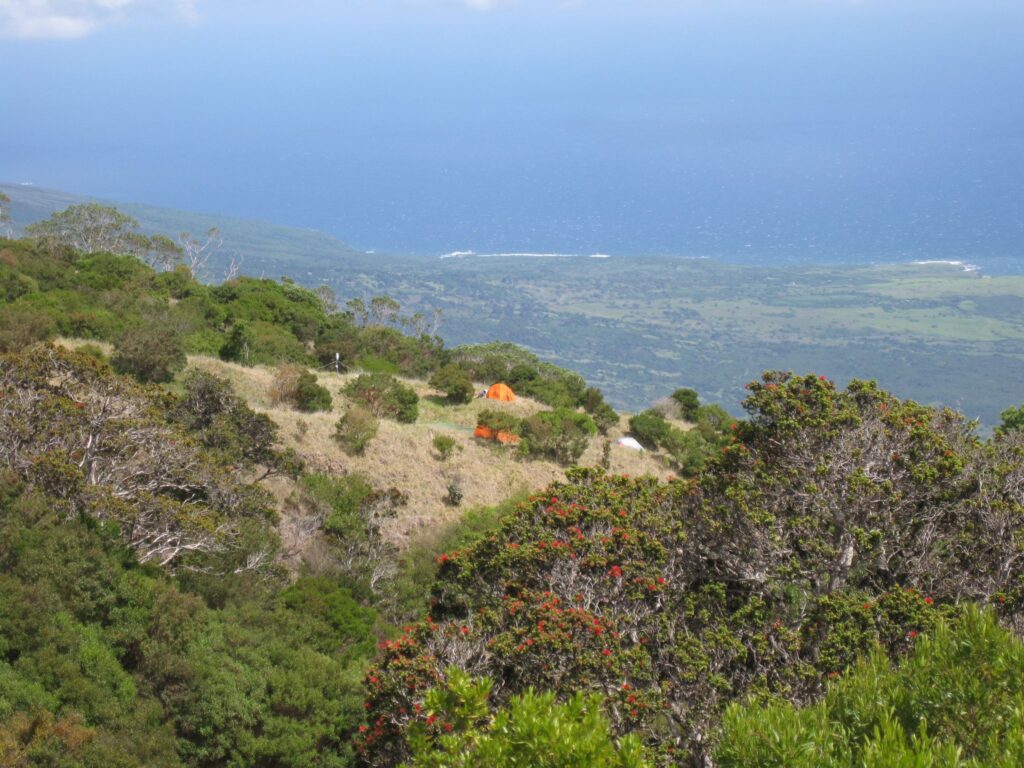
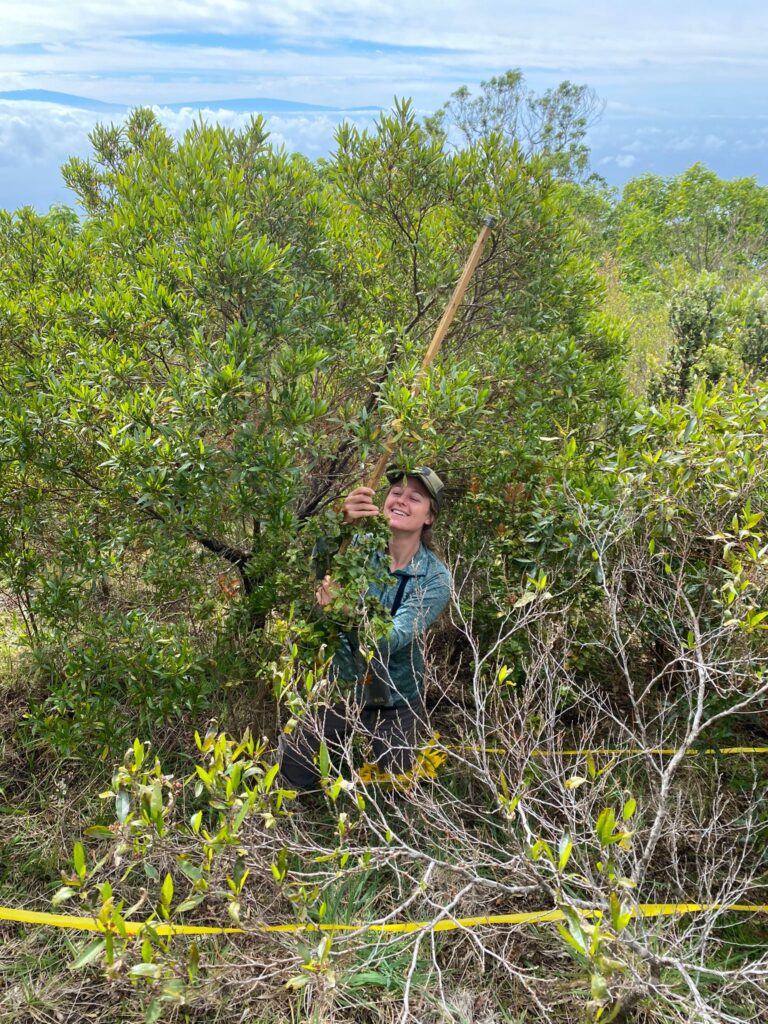
![]()
Save the Forest, Save the Birds
It takes a community of dedicated individuals and support to make conservation happen
